
Port Marianne: Montpellier's Modern Marvel
Discover Port Marianne in Montpellier, a vibrant neighborhood known for its modern architecture, lush parks, and a diverse array of dining and shopping options.
Nestled in the heart of Montpellier, Port Marianne is a neighborhood that beautifully marries contemporary design with lush green spaces. This urban gem is a testament to modern architecture, featuring sleek buildings and innovative designs that offer a sharp contrast to the historical charm found elsewhere in the city. As you stroll through its wide boulevards and meticulously planned streets, you'll find that Port Marianne is a perfect blend of urban sophistication and natural beauty. Despite its modern facade, Port Marianne is also a haven for nature lovers. The neighborhood is home to several parks and promenades, including the stunning Jacques Coeur Basin, where you can enjoy a leisurely walk along the water's edge. The area is also dotted with artistic installations and public sculptures, making it a vibrant outdoor gallery. Port Marianne is not just about sights; it's a culinary hotspot as well. The neighborhood boasts a range of dining options, from chic cafes to high-end restaurants, offering both local and international cuisines. For those who love shopping, the nearby Odysseum commercial center offers a plethora of retail options. Whether you're here for a day or planning a longer stay, Port Marianne provides a refreshing and dynamic experience that contrasts beautifully with the historic core of Montpellier.
Local tips in Port Marianne
- Visit the Jacques Coeur Basin for a relaxing walk and stunning water views.
- Explore the local art installations scattered throughout the neighborhood.
- Dine at one of the many high-end restaurants to experience both local and international cuisines.
- Shop at the Odysseum commercial center for a wide range of retail options.
Port Marianne: Montpellier's Modern Marvel
Nestled in the heart of Montpellier, Port Marianne is a neighborhood that beautifully marries contemporary design with lush green spaces. This urban gem is a testament to modern architecture, featuring sleek buildings and innovative designs that offer a sharp contrast to the historical charm found elsewhere in the city. As you stroll through its wide boulevards and meticulously planned streets, you'll find that Port Marianne is a perfect blend of urban sophistication and natural beauty. Despite its modern facade, Port Marianne is also a haven for nature lovers. The neighborhood is home to several parks and promenades, including the stunning Jacques Coeur Basin, where you can enjoy a leisurely walk along the water's edge. The area is also dotted with artistic installations and public sculptures, making it a vibrant outdoor gallery. Port Marianne is not just about sights; it's a culinary hotspot as well. The neighborhood boasts a range of dining options, from chic cafes to high-end restaurants, offering both local and international cuisines. For those who love shopping, the nearby Odysseum commercial center offers a plethora of retail options. Whether you're here for a day or planning a longer stay, Port Marianne provides a refreshing and dynamic experience that contrasts beautifully with the historic core of Montpellier.
Iconic landmarks you can’t miss
Arc de Triomphe
Explore the Arc de Triomphe in Montpellier, a stunning historical landmark symbolizing the city's rich heritage and architectural brilliance.
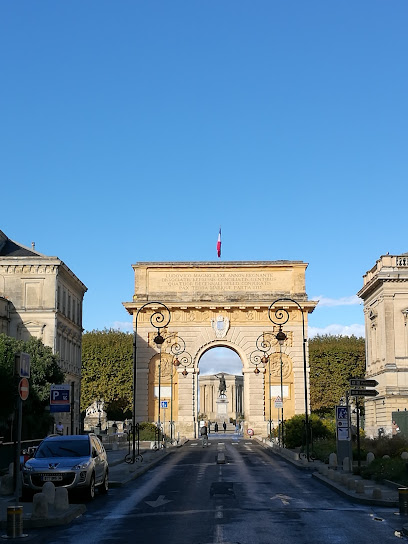
Promenade du Peyrou
Experience the beauty and history of Montpellier at the stunning Promenade du Peyrou, a tranquil escape adorned with magnificent architecture and lush gardens.
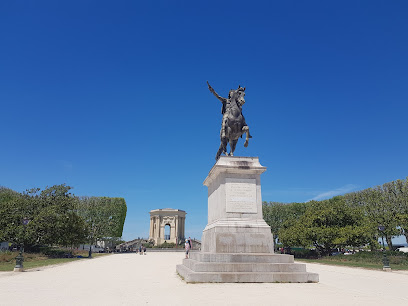
Pavillon Populaire
Explore the Pavillon Populaire in Montpellier, a premier destination for contemporary photography and engaging art exhibitions in a serene park setting.
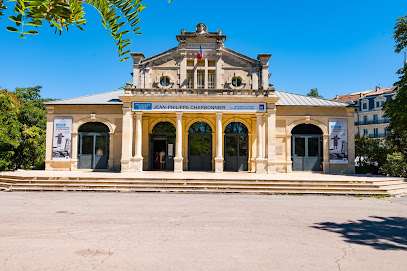
Parc Georges Charpak
Explore the tranquil beauty of Parc Georges Charpak in Montpellier, a perfect escape into nature with vibrant culture and recreation.
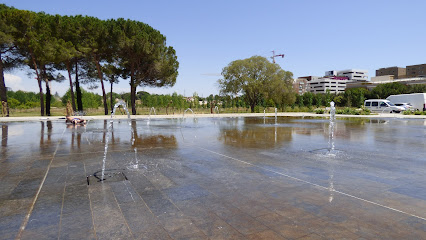
Bassin jacques Cœur
Explore Bassin Jacques Cœur, a serene city park in Montpellier, featuring lush gardens, tranquil waters, and picturesque architecture perfect for relaxation.
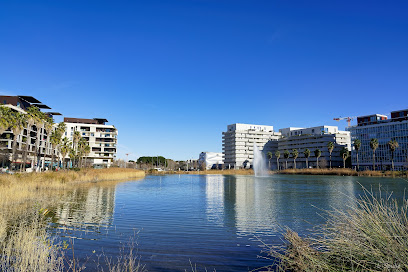
Château de la Mogère
Explore the exquisite Château de la Mogère, a stunning 19th-century castle near Montpellier surrounded by beautiful gardens and rich history.
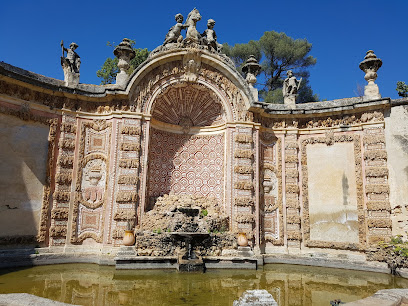
Fountain of the Three Graces
Explore the enchanting Fountain of the Three Graces in Montpellier, a stunning landmark blending art, history, and vibrant city life.
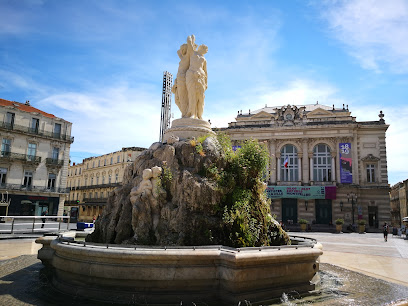
Place des Grands-Hommes
Discover the immersive historical experience at Place des Grands-Hommes in Montpellier, where past and present blend seamlessly in vibrant reenactments.
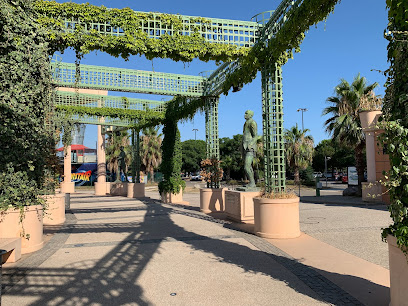
Place Zeus
Experience the vibrant culture and historical charm of Place Zeus in Montpellier, a must-visit tourist attraction for every traveler.
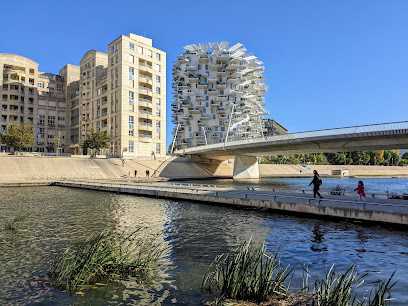
Place du Nombre d'Or
Experience the vibrant energy and rich history of Montpellier at Place du Nombre d'Or, a charming square filled with culture, cafes, and captivating architecture.
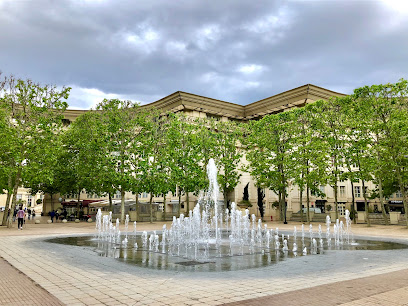
Port Marianne
Discover Montpellier's vibrant culture and stunning architecture from the Port Marianne light rail station, your gateway to this enchanting French city.
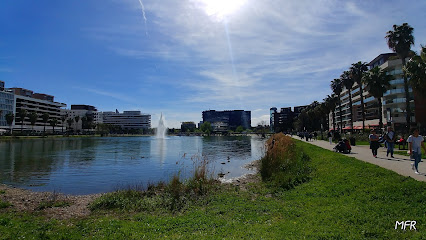
Miroir d’eau
Experience the serene beauty of Miroir d'Eau, a stunning water mirror reflecting Montpellier's architectural charm and vibrant atmosphere.
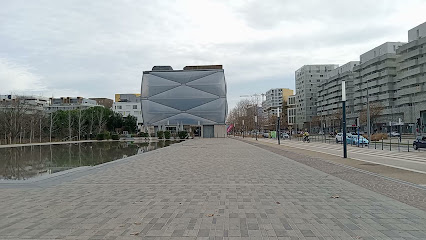
Place De Phocée
Discover the vibrant charm of Place De Phocée in Montpellier, a cultural hub filled with stunning architecture, delightful cafes, and lively events.
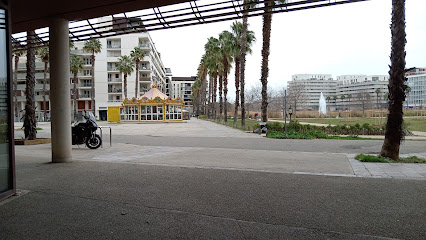
Place Michel Rocard
Explore the enchanting Place Michel Rocard in Montpellier – a historic square rich in culture and a perfect spot to unwind and experience local life.
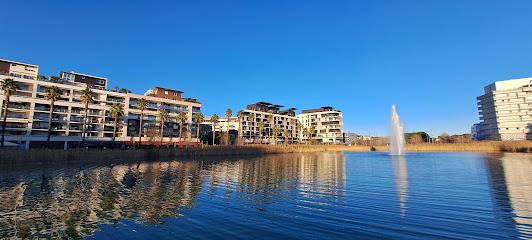
Les FRESQUES de la Place François Jaumes
Explore the vibrant murals of Les FRESQUES de la Place François Jaumes, an open-air gallery that showcases Montpellier's rich culture and artistic spirit.
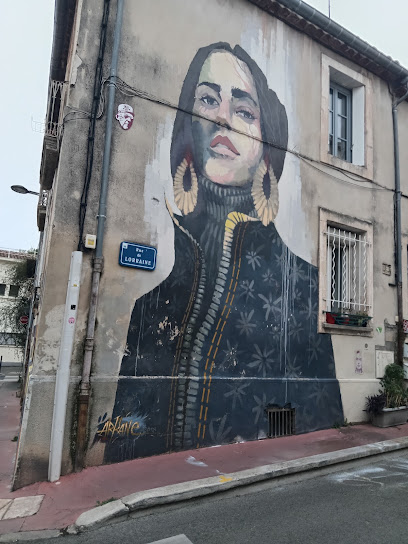
Unmissable attractions to see
Planet Ocean World
Explore the wonders of the ocean at Planet Ocean World, a captivating aquarium and animal park in Montpellier, perfect for families and marine enthusiasts.
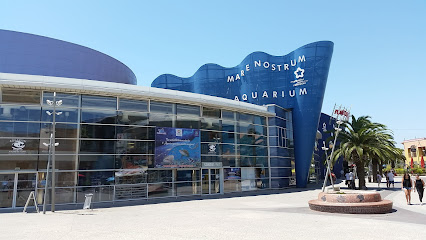
Promenade du Peyrou
Experience the charm of Promenade du Peyrou, a historical promenade in Montpellier, where culture and nature harmoniously intertwine.
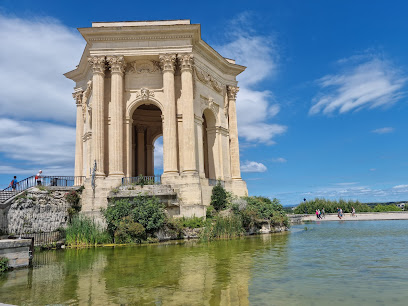
Pavillon Populaire
Explore the Pavillon Populaire in Montpellier - a vibrant hub of contemporary art and photography, perfect for every art lover visiting the city.
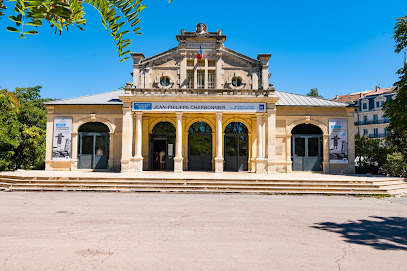
Parc Georges Charpak
Explore the lush landscapes and vibrant gardens of Parc Georges Charpak, a serene retreat in Montpellier perfect for relaxation and family fun.
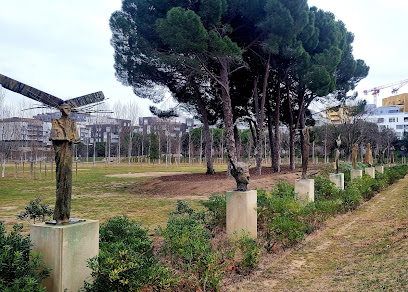
Château De Flaugergues
Experience the elegance of Château De Flaugergues, a historical castle in Montpellier with stunning gardens and exquisite wines, perfect for culture enthusiasts.
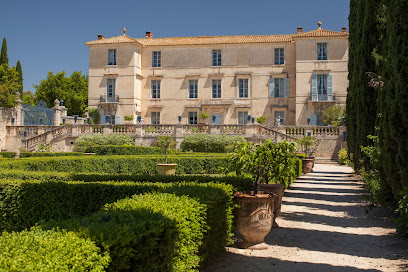
Miroir d’eau
Discover the enchanting Miroir d’eau in Montpellier, a mirror-like pool reflecting the beauty of sky and architecture, perfect for relaxation and photography.
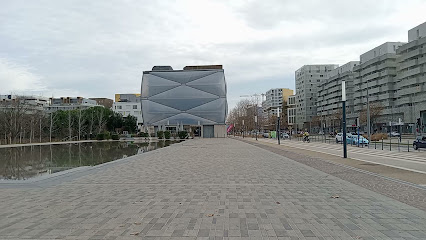
Place Michel Rocard
Explore the vibrant ambiance of Place Michel Rocard, a charming square in Montpellier filled with local culture, cafes, and unforgettable experiences.
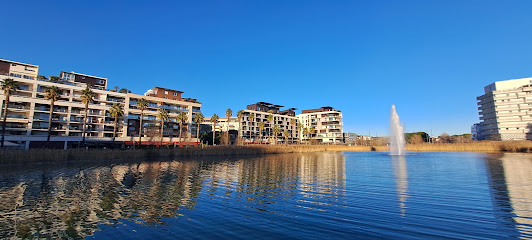
Essential places to dine
IL RISTORANTE - Le restaurant Italien de Montpellier
Discover authentic Italian flavors at IL RISTORANTE in Montpellier - where every meal is a celebration of Italy's rich culinary heritage.
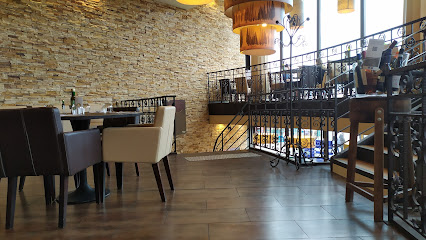
M&lice
Discover M&lice in Montpellier - where culinary excellence meets vibrant ambiance for an unforgettable dining experience.
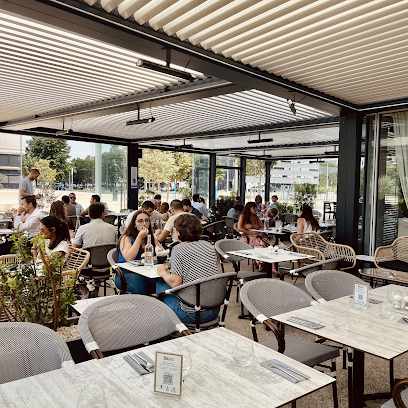
A TAVOLA Pizzeria
Experience authentic Italian flavors at A TAVOLA Pizzeria in Montpellier—where every pizza tells a story.
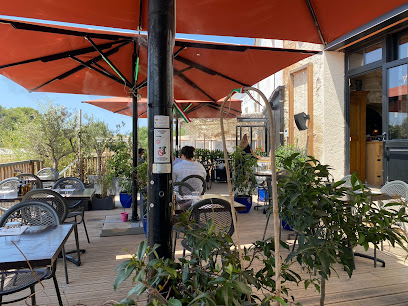
L'Atelier du Petit Jardin
Experience authentic French dining at L'Atelier du Petit Jardin in Montpellier – where tradition meets modern culinary artistry.

La Factory
Discover La Factory in Montpellier: A delightful fusion of French culinary tradition and modern diner charm.
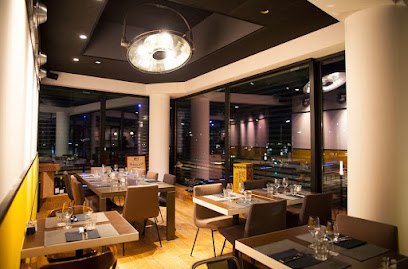
Katfys
Discover the vibrant flavors at Katfys in Montpellier – where local cuisine meets international flair in a cozy setting.
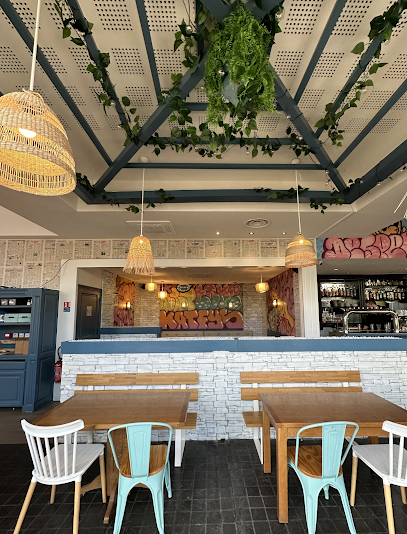
Naïa Restaurant | Montpellier
Experience authentic Mediterranean cuisine at Naïa Restaurant in Montpellier—where fresh ingredients meet exquisite flavors.
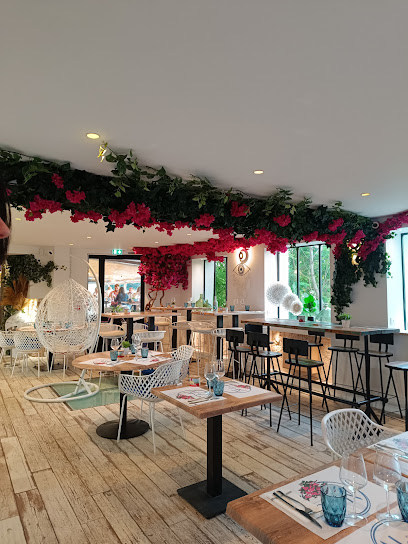
La Kitchenette
Experience authentic Thai flavors at La Kitchenette in Montpellier - a culinary haven for food lovers.
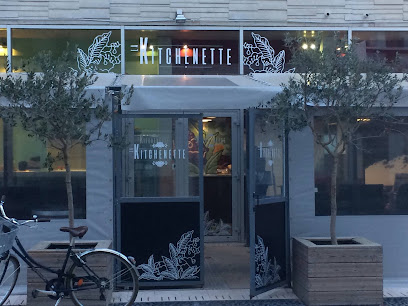
chez cui-cui
Experience the heart of French cuisine at Chez Cui-Cui in Montpellier - where fresh ingredients meet culinary artistry.
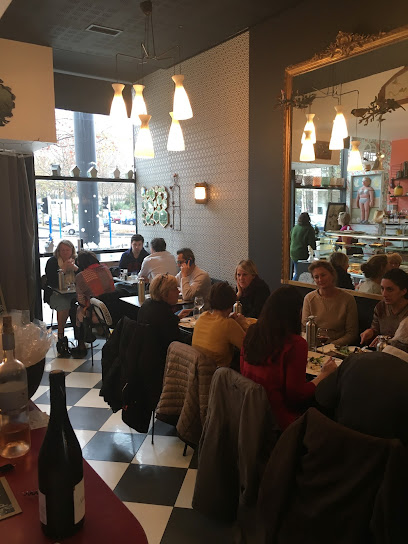
Arlo Restauration
Discover the culinary excellence at Arlo Restauration in Montpellier, where traditional flavors meet modern creativity in every dish.
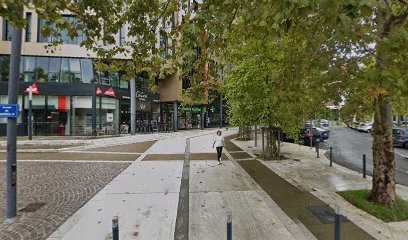
Markets, malls and hidden boutiques
Galeries Lafayette
Experience the elegance and variety of Galeries Lafayette in Montpellier, your ultimate shopping destination for fashion, beauty, and home goods.

H&M
Explore trendy fashion at H&M Montpellier, your go-to destination for stylish apparel for the whole family.
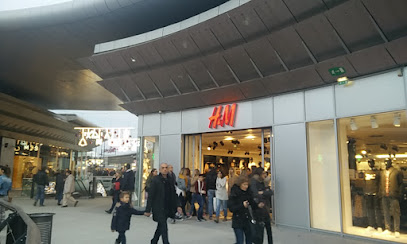
RBC MONTPELLIER - Boutique & Librairie
Discover RBC Montpellier, a unique boutique and bookstore offering an eclectic mix of gifts, home goods, and literature in the heart of Montpellier.
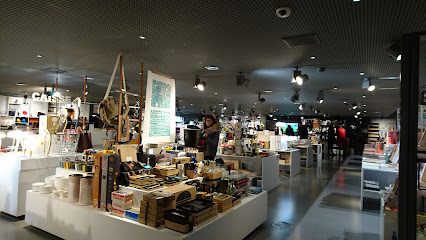
Easter Egg La petite boutique des cultures geeks
Explore the enchanting world of geek culture at Easter Egg, Montpellier's premier bookstore and figurine shop, filled with treasures for every fan.
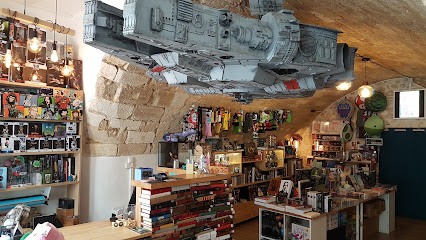
Gaston
Discover the essence of Montpellier at Gaston Boutique, where local artistry meets stylish shopping in a charming atmosphere.
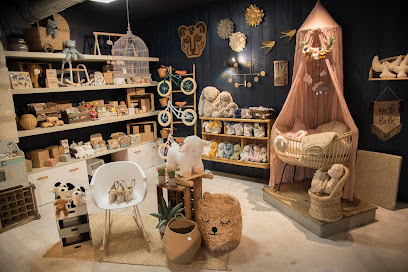
MARIANNE SHOP
Experience the local flavors of Montpellier at Marianne Shop, your go-to grocery destination for fresh produce and specialty items.
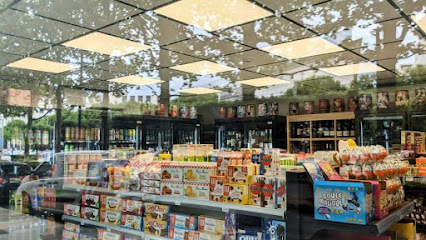
Les Créatures
Explore Les Créatures in Montpellier: A unique gift shop offering home goods, women's clothing, and plants that capture the city's essence.
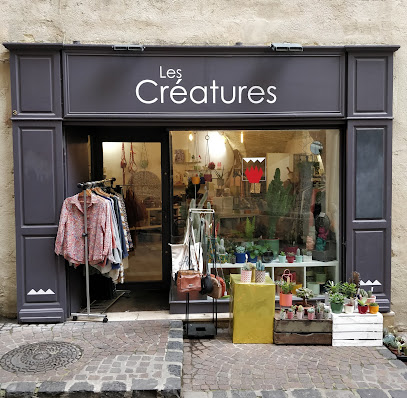
Concept Store Mona Mour
Explore the charm of Montpellier at Concept Store Mona Mour, where unique gifts and local creativity come together in a delightful shopping experience.
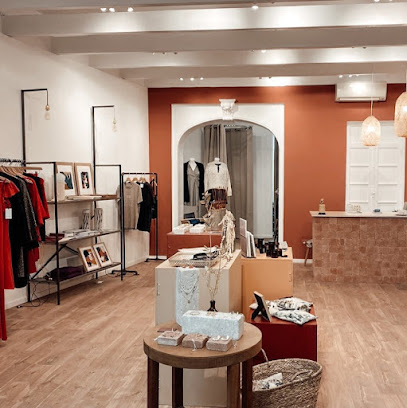
A La changerie
Discover unique vintage clothing and accessories in Montpellier's charming A La Changerie, where every piece tells a story.
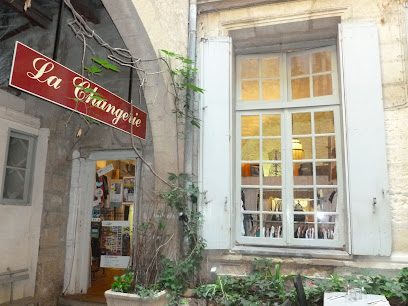
Le 609
Explore Le 609, Montpellier's chic women's clothing boutique, featuring stylish apparel, accessories, and more for the modern fashionista.
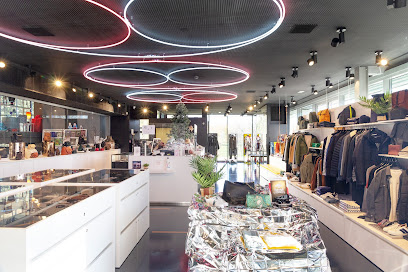
Essential bars & hidden hideouts
Trinquefougasse O’Sud
Experience the vibrant flavors of Southern France at Trinquefougasse O’Sud, a top-rated tapas and wine bar in Montpellier.
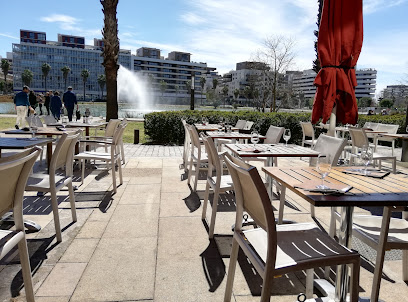
M&lice
Experience the vibrant flavors of Montpellier at M&lice, a delightful bar and restaurant perfect for any occasion.

O’Sullivans Pub Montpellier
O’Sullivans Pub in Montpellier: A vibrant Irish pub offering a unique blend of cocktails, beers, and tapas in a lively atmosphere.
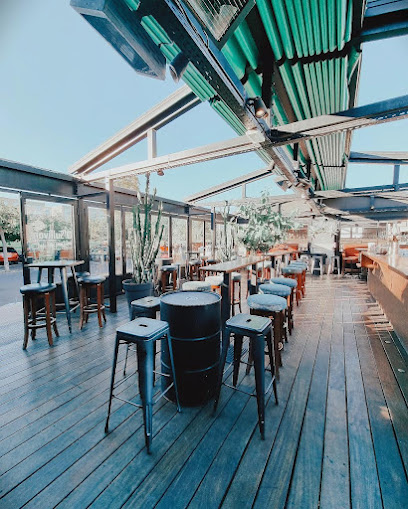
Ayers Rock Montpellier
Dive into the energetic nightlife of Montpellier at Ayers Rock, a bar and club where unforgettable memories are made in vibrant surroundings.
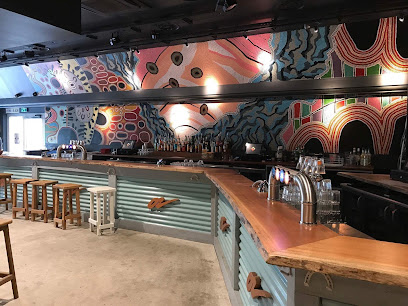
Le Comptoir
Experience the charm of French cuisine at Le Comptoir, a delightful bar and bistro in Montpellier, perfect for food lovers and casual diners alike.
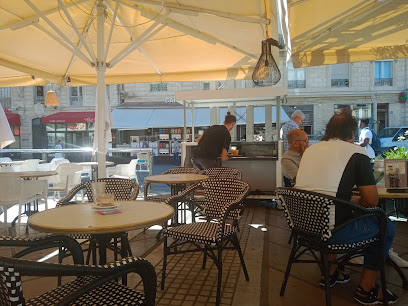
My Beers
Discover the finest craft beers and delightful wines at My Beers, Montpellier's premier beer hall and bar, offering a lively atmosphere and expert recommendations.
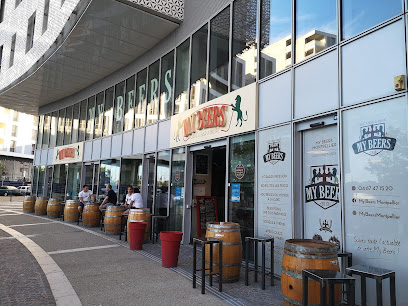
Under Roof Bar
Explore the vibrant atmosphere of Under Roof Bar in Montpellier, where exquisite cocktails and delicious cuisine meet for an unforgettable night out.
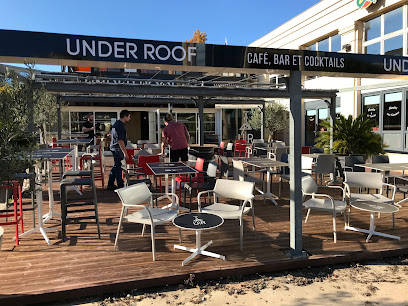
COYOT bar
Experience the best of Montpellier at COYOT Bar, where stunning views, creative cocktails, and vibrant nightlife come together for an unforgettable evening.
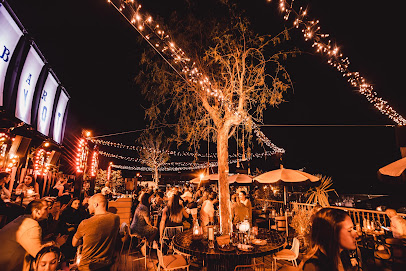
Willie Carter Sharpe
Experience the vibrant nightlife of Montpellier at Willie Carter Sharpe, where innovative cocktails and a cozy atmosphere await every visitor.

Naked
Experience the vibrant nightlife at Naked, a lively bar in Montpellier offering creative cocktails and a welcoming atmosphere for all visitors.
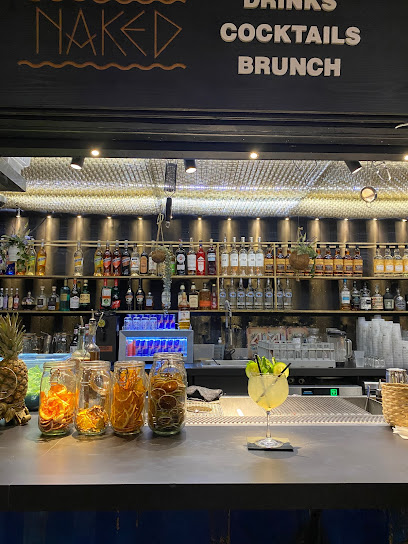
Local Phrases
-
- HelloBonjour
[bon-zhoor] - GoodbyeAu revoir
[oh ruh-vwahr] - YesOui
[wee] - NoNon
[nohn] - Please/You're welcomeS'il vous plaît/De rien
[seel voo pleh/duh ryen] - Thank youMerci
[mehr-see] - Excuse me/SorryExcusez-moi/Désolé
[ex-kew-zay mwah/dey-zoh-lay] - How are you?Comment ça va?
[koh-mohn sah vah] - Fine. And you?Bien. Et vous?
[byen. ay voo] - Do you speak English?Parlez-vous anglais?
[par-lay voo ahn-glay] - I don't understandJe ne comprends pas
[zhuh nuh kohm-prahnd pah]
- HelloBonjour
-
- I'd like to see the menu, pleaseJe voudrais voir la carte, s'il vous plaît
[zhuh voo-dray vwahr lah kart, seel voo pleh] - I don't eat meatJe ne mange pas de viande
[zhuh nuh mahnj pah duh vyand] - Cheers!Santé!
[sahn-tay] - I would like to pay, pleaseJe voudrais payer, s'il vous plaît
[zhuh voo-dray pay-ay, seel voo pleh]
- I'd like to see the menu, pleaseJe voudrais voir la carte, s'il vous plaît
-
- Help!Au secours!
[oh suh-coor] - Go away!Allez-vous en!
[ah-lay voo zahn] - Call the Police!Appelez la police!
[ah-peh-lay lah poh-lees] - Call a doctor!Appelez un médecin!
[ah-peh-lay uh meh-deh-sahn] - I'm lostJe suis perdu(e)
[zhuh swee pear-doo] - I'm illJe suis malade
[zhuh swee mah-lahd]
- Help!Au secours!
-
- I'd like to buy...Je voudrais acheter...
[zhuh voo-dray zah-shay...] - I'm just lookingJe regarde juste
[zhuh ruh-gard zhust] - How much is it?Combien ça coûte?
[kohm-byen sah koot] - That's too expensiveC'est trop cher
[say troh shair] - Can you lower the price?Pouvez-vous baisser le prix?
[poo-veh voo bay-say luh pree]
- I'd like to buy...Je voudrais acheter...
-
- What time is it?Quelle heure est-il?
[kell er ay-teel] - It's one o'clockIl est une heure
[eel ay oon er] - Half past (10)Dix heures et demie
[dees er ay duh-mee] - MorningMatin
[mah-tan] - AfternoonAprès-midi
[ah-pray-mee-dee] - EveningSoir
[swah] - YesterdayHier
[yehr] - TodayAujourd'hui
[oh-zhoor-dwee] - TomorrowDemain
[duh-mahn] - 1Un
[uhn] - 2Deux
[duh] - 3Trois
[twa] - 4Quatre
[kat] - 5Cinq
[sank] - 6Six
[sees] - 7Sept
[set] - 8Huit
[wheet] - 9Neuf
[nuff] - 10Dix
[dees]
- What time is it?Quelle heure est-il?
-
- Where's a/the...?Où est le/la...?
[oo ay luh/lah] - What's the address?Quelle est l'adresse?
[kell ay lad-res] - Can you show me (on the map)?Pouvez-vous me montrer (sur la carte)?
[poo-veh voo muh mohn-tray (soor lah kart)] - When's the next (bus)?Quand est le prochain (bus)?
[kond ay luh proh-shan (bus)] - A ticket (to ....)Un billet (pour ....)
[uhn bee-yay (poor)]
- Where's a/the...?Où est le/la...?
History of Port Marianne
-
Port Marianne, a relatively new neighbourhood in Montpellier, traces its origins to the late 20th century. Its development began in the 1990s as part of a larger urban planning initiative aimed at revitalizing the city and accommodating its growing population. The neighbourhood was designed with a focus on modern urban living, blending residential, commercial, and recreational spaces.
-
The architecture of Port Marianne is characterized by contemporary designs that reflect Montpellier's modern urban identity. Notable buildings include the 'Le Mistral' and 'Les Jardins de la Lironde,' which showcase innovative use of space and eco-friendly materials. The integration of green spaces and waterways is a hallmark of the neighbourhood, enhancing its appeal as a sustainable urban area.
-
Port Marianne has become a vibrant cultural hub, offering a variety of events and activities that foster community engagement. The neighbourhood hosts local markets, art exhibitions, and cultural festivals, reflecting Montpellier's diverse population and artistic spirit. The presence of public art installations and murals adds to the cultural tapestry, making it a dynamic place for residents and visitors alike.
-
The Lez River, which runs through Port Marianne, has played a significant role in shaping the neighbourhood’s identity. The river not only provides scenic views and recreational opportunities but also serves as a natural boundary and a vital ecological corridor. Initiatives to enhance the riverbank areas have contributed to the neighbourhood's attractiveness and have encouraged outdoor activities, such as cycling and walking.
-
Looking ahead, Port Marianne is set to undergo further transformations as Montpellier continues to expand. The city’s commitment to sustainable urban development aims to enhance public transportation, increase green spaces, and promote eco-friendly living. As part of the larger Montpellier Metropolis project, Port Marianne is poised to become a model for modern urban environments in France.
Port Marianne Essentials
-
Port Marianne is easily accessible from other neighborhoods in Montpellier. The tram line 1 connects the city center with Port Marianne, making it a convenient option for visitors. You can board the tram at key stations like Antigone or Place de France. Additionally, several bus routes operate in the area, including lines 6, 7, and 9. If you prefer cycling, there are bike lanes leading to Port Marianne, and you can rent a bike from local VéloMagg bike-sharing stations throughout the city.
-
Port Marianne is pedestrian-friendly, making it easy to explore on foot. The tram system is efficient and connects you to other neighborhoods in Montpellier. For those who prefer cycling, the area has dedicated bike paths. Local buses also serve Port Marianne, providing access to further destinations. Taxis and rideshare services like Uber are available for convenience.
-
Port Marianne is generally considered a safe neighborhood for tourists. However, like many urban areas, it is advisable to remain vigilant, especially in crowded places. Avoid areas with dim lighting at night and keep personal belongings secure. While there are no specific high-crime areas targeting tourists, petty theft can occur, particularly near tourist attractions.
-
In case of an emergency, dial 112 for immediate assistance in France. This number connects you to police, fire, and medical services. The local hospital, CHU de Montpellier, is equipped to handle emergencies, and there are pharmacies in the area for minor health issues. Ensure you have travel insurance that covers medical emergencies before your visit.
-
Fashion: Do wear comfortable clothing suitable for walking, especially in warm weather. Don’t wear overly revealing outfits, particularly when visiting religious sites. Religion: Do respect local customs and be mindful of religious practices. Don’t disturb those engaged in worship. Public Transport: Do offer your seat to elderly passengers and be polite. Don’t eat or drink on trams or buses. Greetings: Do greet locals with a smile and a friendly 'Bonjour.' Don’t use overly casual greetings unless you know the person well. Eating & Drinking: Do try local wines and regional specialties. Don’t rush through meals; dining is often a leisurely experience.
-
To experience Port Marianne like a local, consider visiting the nearby Parc Marianne, a lovely park perfect for picnics and leisurely strolls. Check out local markets for fresh produce and regional specialties. Engage with local artisans in the area for unique souvenirs. Attend community events if your visit coincides with them, as they often showcase local culture and traditions. Lastly, take your time to enjoy the waterfront promenades, which are popular spots for both locals and visitors.
Trending Landmarks in Port Marianne
-
Arc de Triomphe
-
Promenade du Peyrou
-
Pavillon Populaire
-
Parc Georges Charpak
-
Bassin jacques Cœur
-
Château de la Mogère
-
Fountain of the Three Graces
-
Place des Grands-Hommes
-
Place Zeus
-
Place du Nombre d'Or
-
Port Marianne
-
Miroir d’eau
-
Place De Phocée
-
Place Michel Rocard
-
Les FRESQUES de la Place François Jaumes
Nearby Cities to Port Marianne
-
Things To Do in Nîmes
-
Things To Do in Avignon
-
Things To Do in Marseille
-
Things To Do in Aix-en-Provence
-
Things To Do in Toulouse
-
Things To Do in Girona
-
Things To Do in Pas de la Casa
-
Things To Do in Soldeu
-
Things To Do in Canillo
-
Things To Do in El Serrat
-
Things To Do in Ordino
-
Things To Do in Encamp
-
Things To Do in Saint-Tropez
-
Things To Do in La Massana
-
Things To Do in Escaldes-Engordany





